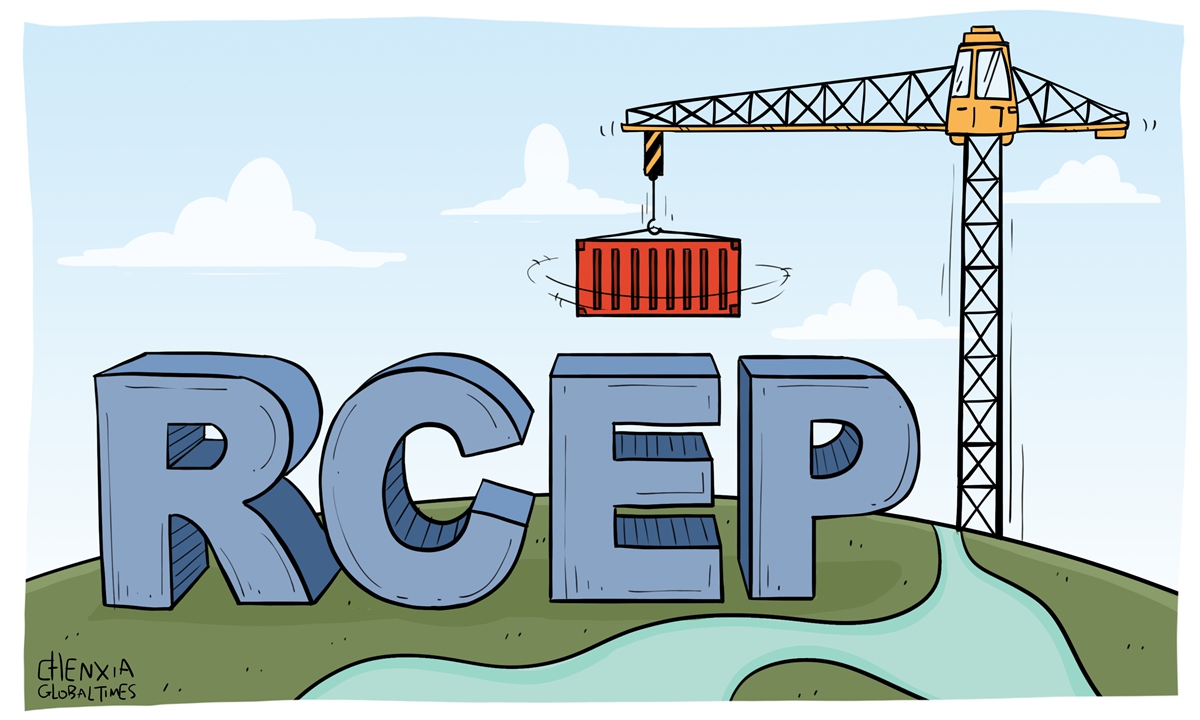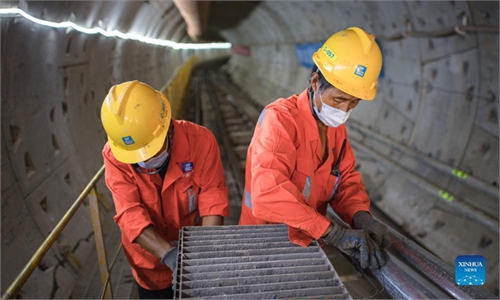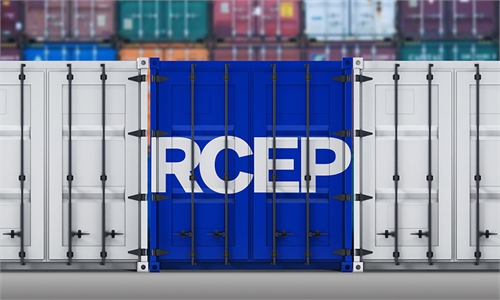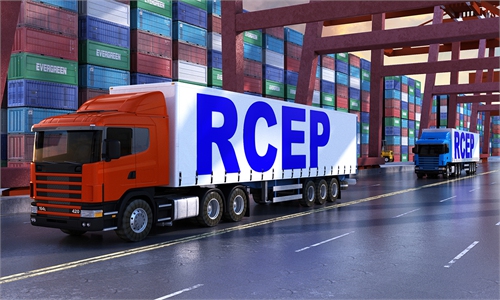COMMENTS / EXPERT ASSESSMENT
Will RCEP make Asia ‘center of gravity’ for global commerce?

Illustraton: Chen Xia/Global Times
Everyone knows free trade enhances productivity and creates wealth. With the 15-member RCEP (Regional Comprehensive Economic Partnership) coming into force at the beginning of 2022, the world's largest free trade area is born that will bring heightened certainty to open, fair, inclusive and rules-based multinational trade and investment to all the signatories. In sharp contrast to the US government's penchant for imposing trade tariffs and unilateral economic sanctions against other countries, RCEP is likely to make Asia the "center of gravity" for global commerce and prosperity.Under RCEP, around 90 percent of trade tariffs within the bloc will eventually be eliminated. The deal is intended to drastically cut red tape as it includes one set of common rules of origin throughout the member economies, which implies 15 members only require "one certificate of origin for trading" and help shore up formation of an efficient supply chain within the bloc. There are varied calculations on how much RCEP will create to the regional economy with some projecting the deal will add approximately $500 billion to world trade by 2030.
Through new market access commitments and streamlined, modern rules and disciplines that facilitate trade and investment, RCEP promises to deliver new business and employment opportunities, strengthen supply chains in the region, and promote the participation of micro, small and medium enterprises into the regional value chains and production hubs.
Asia-Pacific regional economic markets are set to gain new momentum, as sharply lowered tariffs and enhanced market access among the 15 member countries will revitalize a whole stream of industries like machinery, steel, automobiles, electronics, medicine, aviation, finance, education and tourism. E-commerce and AI-led technology innovations will also grow in the region thanks to closer corporate cooperation and personnel free flow enabled by the new deal.
According to the World Bank, RCEP covers 2.3 billion people or 30 percent of the world's population and the 15 member economies aggregately account for 30 percent of global GDP, more than a quarter of global trade in goods and services, and 31 percent of global FDI inflows.
South Korean President Moon Jae-in spoke highly of the free trade deal, praising it as an unprecedented mega regional trading agreement and said he has confidence in its contribution to the recovery of multilateralism, free trade and investment encompassing the whole region. Moon also stated he expects RCEP to open the world's biggest e-commerce market, as the agreement sets common rules managing trade, intellectual property, e-commerce, online data storage and protection.
RCEP is expected to have a far-reaching impact on regional trade facilitation and economic integration over the coming years. And, under this framework, the three countries in Northeast Asia - China, Japan and South Korea which are among Asia's four largest economies - are to greet surging trade and investment among them. Based on RCEP framework, the three are likely to ramp up negotiations to form a tripartite free trade agreement soon.
In a time of rising geopolitical volatility due to an increasingly reckless government of the US, RCEP will gear up all 15 members' confidence in overcoming their businesses' operational risks, as the agreement brings higher certainty to business demand and supply within the trade bloc.
Take auto industry for an example, parts are often manufactured in different countries but assembled in one place, so drastically reducing tariffs and removing other barriers, ensured under RCEP rules, will greatly cut car production cost while improving logistical efficiency across the region. For the end users in the bloc, low tariffs mean choice of more inexpensive products. For instance, Chinese consumers are avid buyers of good-quality fruits produced in ASEAN countries.
However, with RCEP now in effect, politicians in Washington are very worried. They fret that lack of participation by the US will "allow Beijing to solidify its role as driver of economic growth in Asia." Should RCEP serve as igniting a key engine of trade, investment and economic growth in the world, how could the US be left out? Those politicians wonder.
15 Republican senators on US Capitol Hill wrote a letter to the White House in November, urging the Biden administration to begin trade negotiations with American allies in Asia. The dismayed politicians wrote: "China is quickly seizing the initiative for trade policy in the East, to the detriment of the US interests. Fifteen countries - comprising 30 percent of global GDP - have signed on a trade deal that China backs." And, China now has even applied to join CPTPP. "That China could someday become an outsized member of both major blocs in Asia while the US is party to neither, is a strategically unfavorable position to be for the US."
"If this challenge is left unanswered, China will continue to make headway in its strategy to build a China-centric economic order and displace the US from its preeminent position in international affairs," the letter said.
Will the US change course and come back to free and fair trade? Very unlikely. Former president Donald Trump made trade a toxic issue, and the Biden administration has all but inherited his predecessor's protectionist trade and investment policy. The White House only cares about bringing more outsourced factories and jobs back to America and it hates to remove hefty tariffs that would have benefited China and other economies.
But RCEP will hand a good opportunity for Asia, including China, to build up an edge, or a firewall against the US government's attempts to renege and shake economic globalization. A Chinese saying goes: By a half-sunken boat, a thousand others are sailing.
The author is an editor with the Global Times. bizopinion@globaltimes.com.cn



